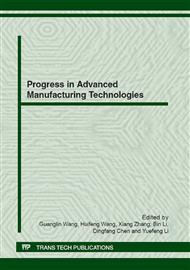p.546
p.552
p.556
p.560
p.566
p.574
p.578
p.582
p.587
Research on the Buffer Material Used as Hip Protector for the Elderly against Falling down
Abstract:
In order to develop an efficient hip protector to protect the elderly's femur when he (or she) has a fall, the research on characteristics of sponge material is carried out. The buffer rate of material is defined, and the material absorption ability to the instant impact is measured in this paper. An experimental device which can simulate the force state of femur hit by instant impact when the elderly is falling down is developed and used to research the buffer rates of different types of sponge. According to the result, the soft material is effective to absorb small impact, while the harder material is useful for absorbing greater impact. Meanwhile, the buffer rate also largely depends on thickness of the material. Results show that in the same hardness material, the buffer rate of 30mm-thickness is apparently higher than that of 20mm and 10mm-thickness. And, when thickness of the material increases, the sensitivity of the buffer rate to the material hardness and to the instant impact acted on the material decreases. That is, the higher buffer rate could be obtained in a large range of instant impact and hardness of material. This conclusion is very useful for us to select suitable material to make hip protector or other sport protectors.
Info:
Periodical:
Pages:
566-573
Citation:
Online since:
August 2012
Authors:
Keywords:
Price:
Сopyright:
© 2012 Trans Tech Publications Ltd. All Rights Reserved
Share:
Citation:


